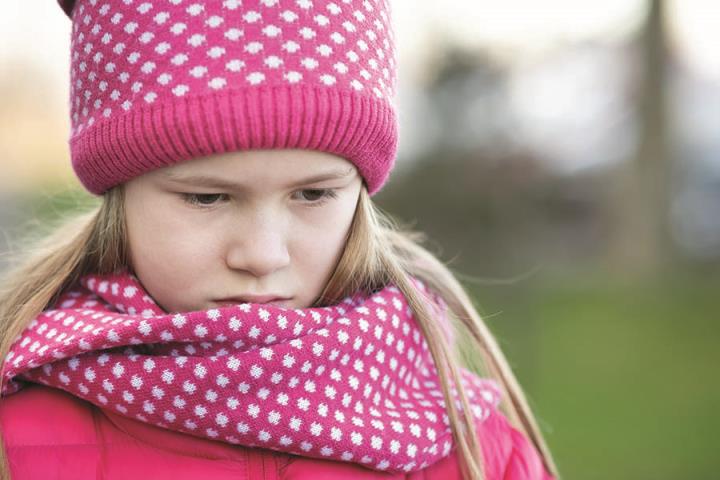Jul 29, 2022

When she suffered the same symptoms a short time later, this time before a party at her school, I realized something was wrong. Especially when she told me what triggered her intense physical symptoms: she could not stop worrying that something bad would happen to me as I drove to her school.
Having some anxiety is a normal part of life for most kids. After all, what child doesn’t feel anxious before taking a test? Or making a presentation in front of the class? And what about trying out for the team?
Some children, though, feel worry or fear constantly. According to the Mayo Clinic, anxiety disorders involve “intense, excessive and persistent worry and fear about everyday situations.” Further, such feelings of anxiety and panic “interfere with daily activities, are difficult to control, are out of proportion to the actual danger and can last a long time.”
The CDC reports that 9.4% of children aged 3-17 were diagnosed with anxiety in 2016-2019. That’s 5.8 million kids. And since the COVID-19 pandemic the number of kids with an anxiety disorder will undoubtedly increase.
After visiting the pediatrician, my daughter was diagnosed with Generalized Anxiety Disorder. Now she sees a therapist and takes medication to treat her anxiety. Through her experience, I have learned so much about anxiety disorders in children. I’m sharing what I’ve learned in hopes of helping other parents and caregivers.
Types of Anxiety DIsorders in Children
There are several types of anxiety disorders, related to what the worries or fears are about, or how children handle them. According to WebMD, the most common anxiety disorders in kids include the following:
• Generalized Anxiety Disorder (GAD) is constant worrying about a lot of different things out of proportion to the actual circumstance.
• Panic disorders are characteristized by sudden, intense fear that leaves a child feeling physically overwhelmed and out of control even when there is no danger.
• Separation anxiety is the fear that something bad will happen to a parent or loved one when the child is separated from them. Some separation anxiety is a
normal developmental phase for babies and toddlers, but not necessarily for older children.
• Social anxiety is extreme anxiety and fear of being embarrassed insocial situations, like talking with classmates or answering a question in class. It is more than
simple shyness.
Symptoms
According to the CDC and WebMD, the most typical symptoms of anxiety disorders in children include:
• Showing anxiety or expressing worry or fear on most days, for weeks a time
• Trouble sleeping which may manifest in your child seeming sleepy or tired during the day
• Difficulty concentrating or thinking about a problem over and over again
• Unusually irritable and angry
• Headaches
• Stomachaches
• Avoiding school or friends because worries are overwhelming
• Trouble calming down after leaving a parent or loved one, or extreme homesickness
How to help
The CDC recommends talking to your healthcare provider as a first step. This is what we did in my daughter’s case when we visited her pediatrician. A primary care doctor or mental health specialist can evaluate your child and ensure that your child’s symptoms are caused by anxiety and not another condition, such as trauma.
Cognitive behavioral therapy (CBT) and medication are the most accepted treatments to help children overcome an anxiety disorder according to the Anxiety Disorders Association of America.
CBT teaches your child skills and tools to help them feel less anxious and fearful. Through CBT, for instance, my daughter learned to utilize tools like a “worry box”. She’d write down her worry on a piece of paper, then stuff the paper in a box. It was a tangible way to release her fear.
Prescription medication may also help. Parents should work closely with a health care provider to manage the use of medication and monitor your child’s response.
As well, WebMD advocates that parents should let their children know they are available to listen whenever their children are ready to talk. Many kids with anxiety believe their parents won’t understand and thus try to hide their fears. That’s why being ready to listen is so important.
My daughter also joined an anxiety disorder support group at her school, allowing her to connect with peers that understand what she’s going through. As well, I have found support talking to other parents of children with anxiety disorders. So many have been supportive and understanding, making me feel less alone.
Anxiety is a treatable, manageable condition. As parents, we can help kids with anxiety disorders receive the tools, support and love they need to live their healthiest lives possible.







